How to buy vintage clothing: Three experts give their tips
Vintage clothing has become more and more popular over the past decade.
Underneath obvious markers like the launch of brands RRL, or artificially aged sneakers, men have been gradually buying into vintage because it’s authentic, because it’s a way to buy old styles that are suddenly trendy, and just as importantly, because it’s cheap.
I’ve bought vintage off-and-on for most of that time. Initially leather goods, then military clothing, and more recently outerwear. I wrote a post earlier this week about one piece, an M47 Parka.
However, I’m a real beginner when it comes to buying vintage. So I turned to three friends to get their advice, providing tips for any readers venturing into vintage clothing.
Tony Sylvester
Tony is a singer, writer and stylist. He currently works for Timothy Everest as well as touring with rock band Turbonegro. He is a passionate consumer of vintage clothing.
What general advice would you have for someone buying or collecting vintage for the first time?
Most importantly, buy things that you want to wear rather than as collector’s pieces. You’re looking to fill the holes in your wardrobe and/or find a superior quality version of something current, so buy things that are practical and wearable.
Some people look at me shocked if I’m wearing a jacket they know to be particularly rare or special rather than keeping it hermetically sealed in my house, but I’m building a wardrobe, not a museum.
How wary should someone be of variations in pricing, eg something being trendy and therefore suddenly much more expensive? Is that something that affects what you buy?
Again, just don’t let that affect your decision making too much. There will always be mini-trends on the vintage market and things fall in and out of favour, so look more for quality, fit and value.
Pricing will ultimately be directed by scarcity, but there’s plenty of scope to still buy cheap.
If you take the classic Vietnam-era US Army “Jungle Jacket”, the much-copied staple, a first pattern was issued in the late 50s when there were less than 1000 US troops “in country”. Therefore the numbers in circulation were minuscule compared to the fourth pattern issued in 1968, when there were over half a million US soldiers stationed there.
A deadstock 4th pattern should set you back £50 or so. A first pattern? Good luck.
Is it OK to alter vintage clothing to fit, or is that undermining the point of it?
I mean, that is entirely up to you. The reason I buy vintage, however, is often for a specific fit. Unfortunately when a lot of current brands bring out their take on military vintage, they “modernise” the fit, particularly slimming down the silhouette.
That aside, I do like finding pieces that people modified contemporaneously, adding another level of personality to the item.
The other reason I buy vintage is for fabric choice. There’s just a different feel to worn in cloths, especially cottons. As the fibres in poplin or “Cramerton” chino cloth, for example, break down they gain an incredible handle and texture that you cannot replicate.
What categories and periods do you like to wear personally?
I have things from the turn of the 20th century onwards really. My interest wanes after the late 70s/early 80s.
I’ve talked about this a lot before, but my interest is in finding the common ground and the flow between different periods rather than aping a specific timeframe or era.
Just from a penurious perspective it’s often more expensive to find quality, well-made modern clothing than it is to find vintage high-caliber goods. I’m looking for an overall accord rather than to dress up as a soldier or a rockabilly.
Do you always mix them with modern pieces? What tips would you have for doing that well?
I suppose I do, yes. I mean, once it’s in my collection then it occurs naturally rather than in a mindful way. An army jacket will be on a hanger next to an oxford-cloth buttondown and some bespoke trousers so I can see how it goes together.
The same rules probably apply to buying vintage as to buying new clothes: buy less, buy well and spend wisely. The more patterned or “wild” a piece is, then potentially the less wear you’re going to get from it.
What magazines and particular shops would you recommend?
In London, you need to visit The Vintage Showroom in Covent Garden (Doug and Roy are peerless in their knowledge and their books should be part of the canon), and Levisons in Shoreditch, especially if you’re interested in British vintage in particular.
Same goes for JoJo’s General Store, AKA Rag Parade, in Sheffield. In Paris, visit Gauthier at Le Vif for everything.
One of my favourite things is seeing how different collectors and vendors contextualise pieces. The same jacket might get shown in a completely different light based on styling and surroundings.
An American field jacket might be presented by Bryan at Wooden Sleepers in Brooklyn in an East Coast prep/ivy context; while Le Vif might highlight its countercultural frame of reference with specific button badges or accessories; and then JoJo at Rag Parade might showcase its similarity to a later Massimo Osti-designed technical coat worn by English casuals.
Gauthier Borsarello
Gauthier is a curator, editor and vintage dealer. He collects and loans vintage as part of his Le Vif showroom in Paris, and has a Le Vif vintage shop specialising in made-in-America clothing.
What general advice would you have for someone buying vintage clothing for the first time?
Ask as many questions as you can in the shop, and be comfortable with the fact that you don’t know anything. It’s normal, and not your job to know. If the guy in charge can’t answer the questions, perhaps you’re in the wrong place!
Then just go for anything you like, that fits, and that makes you happy. If you’re confident in the seller, you like how the piece makes you look, and it fits, then that’s success. Don’t worry about it too much more than that.
Is it worth shopping around, for example in street markets and on eBay? Do better-known shops always charge more?
If you have time then yes, of course, it will always be cheaper online. But you will also be taking a risk as regards size, authenticity and condition.
A shop will usually charge more and that’s normal as they provide a service: to curate, wash, size and help you find what you’re looking for. And most of all you can try in person that it fits, check the condition and have the security that it’s authentic - if it’s not, it’s so much easier to complain. You know where to go.
What periods or categories of clothes are easiest to buy, or best value?
Denim, military and T-shirts are to me the best investment. They never lose their value and there is often a clearly defined price (like on a stock market): a Levi’s 501 from this era costs that in this condition, a Rolling Stones T-shirt from this tour in this condition costs that etc.
The cost will change with supply and demand naturally, but these categories are much more stable.
What is your favourite type or period of vintage clothing and why?
I don’t think I have a period or a type to be honest. I’m very broad in my tastes and I keep a really open mind. I just love really well-made clothes from yesterday, today and tomorrow.
I love some pieces from World War 2 and then hate others, because the fit means it isn’t wearable anymore. There are amazing pieces from the 1970s, and then there are some that are just good for costume, cut in polyester fabrics.
There are good clothes and beauty everywhere: the job is to be able to tell the difference, and for the shop-owner to curate and offer the clients what they see as fitting into that.
Max Sardi
Max is the manager of the Real McCoy’s shop in London, and has been buying vintage clothing for over 30 years. He is a collector, a consumer, and a font of knowledge.
What general advice would you have for someone buying vintage for the first time?
The first thing to be aware of is that vintage pieces will all fit differently to things you’re used to in high-street shops. The rise on trousers, the length relative to chest size on a jacket, neck relative to chest on a shirt. So I would never buy vintage online - always take the time to go and try it on.
Because just saying it’s a 32-inch waist doesn’t mean anything - the rise could be really high, and you wouldn’t know?
Exactly. All the patterns were different, and they varied between different eras. Also, body shapes were different: men wear shorter, and less often big or fat. So generally things are a size smaller than you’re expecting, on the chest but particularly on the length.
Can you get a sense of which eras and pieces fit you well, after you’ve tried on enough?
Yes absolutely. If you go into a shop and buy a pair of 1920s trousers, they’ll have a huge rise and a balloon leg. But that became less extreme later on.
How do you feel about altering vintage to fit? Is it sacrilege?
No I think it’s fine, it’s something people have always done. Particularly after wars, with people buying up military surplus. Often it had to be altered to fit and to be functional for civilian use.
Are some categories easier to find, or easier to buy for how they wear over time?
Militaria is easiest to find usually, because there’s so much of it and because it was so closely defined and controlled.
In terms of wear, outerwear like jackets and coats will often wear well, but can be the hardest in terms of fit. Because shirts or knitwear can be layered up if the fit isn’t right, or worn in different ways. There’s no hiding with outerwear.
How does pricing vary? Are better-known vintage shops always going to be more expensive?
Yes generally, but that’s part of its story - the piece has probably gone through lots of hands, from person to person, making a little bit of money each time. With a good store, you also know the piece will have been cleaned, repaired and made wearable. There’s a guarantee there.
So in general, you’re not going to save lots of money unless you start travelling to flea markets, searching through large volumes of poor quality pieces in small regional shops?
Yes exactly. There’s a lot of legwork there, and it’s up to you whether you want to spend your time doing that. Or go to a shop where you’re paying someone else to do it for you.
Also, remember that the shop likely has far more pieces than it can show. So talk to the manager, ask if you can’t find something in particular. It’s good to establish a relationship there.
What pieces do you enjoy shopping for yourself?
In the past five or 10 years I’ve got more into sportswear - coming away from the normal army surplus, denim, leather jackets. It’s fashion to a certain extent - I’ve been doing this on-and-off for 30 years, and spent a long time collecting the other areas.
Do those fashions have a big effect on pricing of vintage, a little like furniture - with mid-century suddenly becoming cool and expensive, brown heavy brown antiques unfashionable and cheap?
Absolutely. In the past two years the 1990s has become so trendy, which is crazy. It used to be so cheap, just throwaway. Now everyone is feverishly collecting American sports jerseys and everything else from that period. Basketball shirts that you bought at the game for $20 are now changing hands for $200.
Images courtesy of: Tony Sylvester, Jamie Ferguson; Max Sardi, Clutch Journal; Gauthier, Vogue and Redingote
The following are Instagram accounts that Max recommends for buying and browsing vintage. The Japanese magazines Clutch and Lightning (available at The Real McCoy's and Clutch Cafe in London) are also great reference resources.
@hangupvintage
@f.w.collins
@whatgoesaround_archive
@houseofvintageuk
@cassiemercantile
@breuerdawson
@levisons_london
@sanforized (Max!)
@deverellsco
@timetunnelvtg
@littlevenicevintage
@raggedythreads
@mothfood
@shop_wesley
@vintagewarrior
@orangepancakes
@gypsy_hunter
@wornovertime
@stockvintagenyc
@snappygabs
@saunders_militaria
@hellerscafeofficial
@woodensleepers
@le.vif.boutique
@broadwayandsons
@originalindianajeans


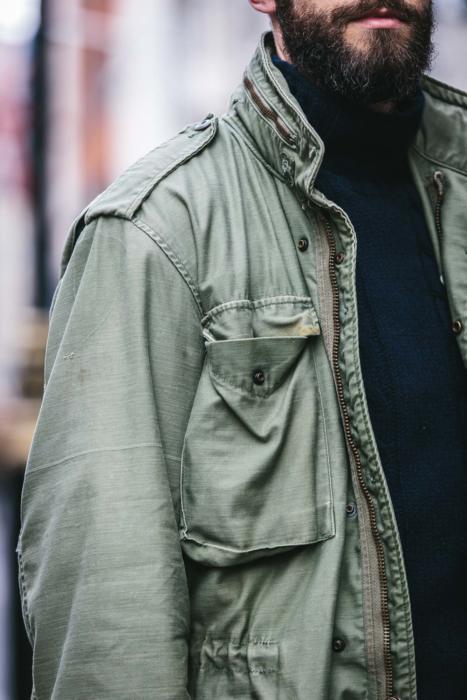
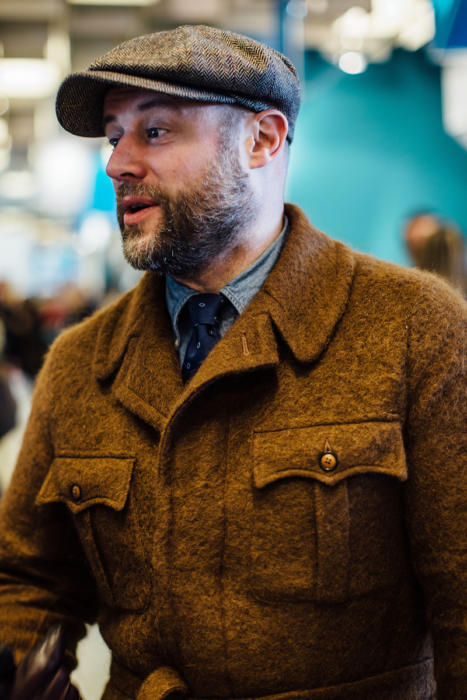
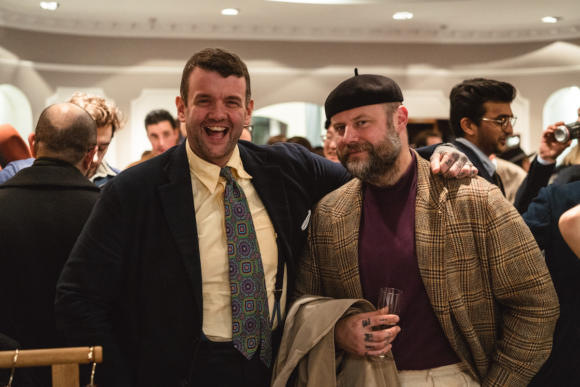
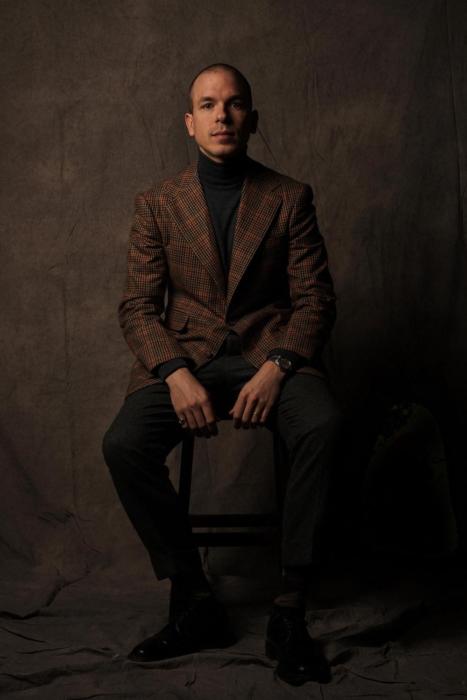
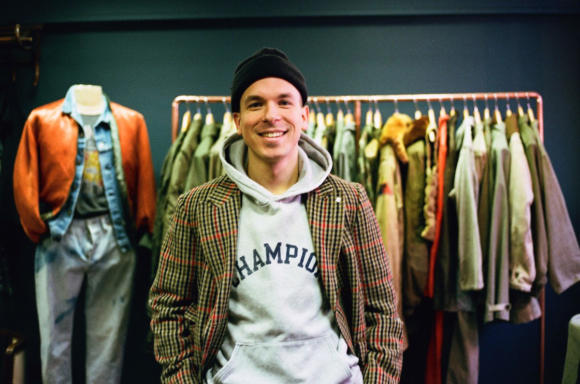
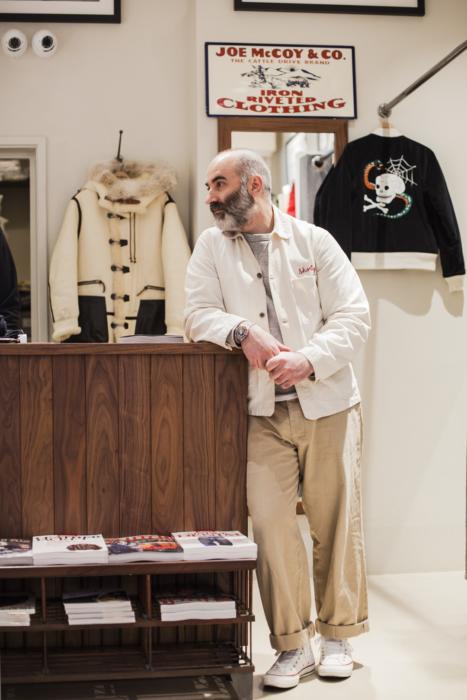
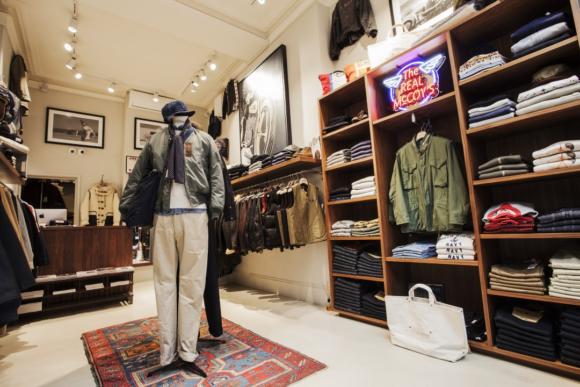
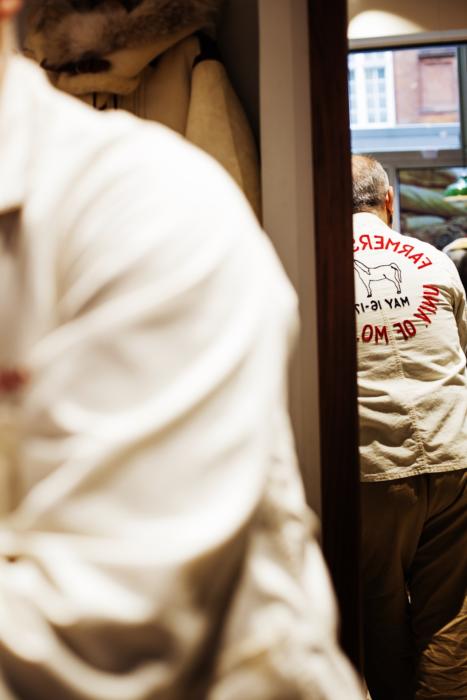


























Crowley Vintage in Brooklyn very good also
Some of this vintage stuff has a mythical status that’s not justified. Some years ago I had an ex. RN duffle coat that I’d bought from an Army surplus shop for £10 I think. Whilst the cloth could stop a bullet, the thing was huge and scratchy and not particularly well made- perhaps a consequence of the requirement to churn out a large volume of coats in a short space of time. It did sterling service as a dog blanket for a number of years before disappearing ( I think the wife chucked it out!) Sacrilege I know. I now have a smart SEH Kelly one.
I think I’d have to agree with you. I’ve had spells of desiring and buying vintage clothing, but unless you’re finding the vintage equivalent of the clothes that Simon normally covers, the normal vintage stuff isn’t anything to write home about. In fact it’s often awful.
I think that, truthfully, it’s the aesthetic that appeals, as well as a rejection of the modern, rather than quality.
It’s an interesting area. I think the biggest issue is that there’s a huge range of quality, and often an assumption that it’s all better than today when it’s often not. But some things, particularly materials, are often better in terms of being hardier and designed to last longer.
I have a question. I have a full evening dress tail coat that belonged to my father. It was made in 1937 in Lisbon and is a work of art. The cloth is still bright and supple, and the jacket looks new. But phew is it thick and heavy. I am not as big as my father was, but the jacket is so beautiful that I have worn it once or twice to balls in Vienna (I make no apology for my dancing habit, and Dad’s jacket was the most beautiful tail coat in Vienna on those nights), but it’s tough going, waltzing across the dance floor in a 1930’s tail coat, and I’d come out at the end of the evening with the same smell about me that you find in the interiors of vintage cars: musty padding … Anyway, I have now had a more modern version of the coat made for me and am starting to think that hanging on to my father’s coat is possibly keeping one Dad souvenir too many. How can I pass this jacket on to a new owner, and be sure its going to a good home? I also have the trousers, but not the waistcoat. Does anyone have any suggestions?
Yes, keep it. Why should you sell it? You’ll make a couple of hundred pounds at most, if it ever gets sold. Is that the price of your emotional attachment? I think not. So keep it.
Thanks Bob. I wasn’t really thinking of the money, but I probably shall keep the tailcoat. I just thought it might find a second life on the London stage, or some such thing. And objects can clutter our lives and obstruct memory. Still, thanks for commenting.
Sell it, dont weigh yourself down with old things, pass it on to someone who wants it. If you’ve a photo of your father in the suit keep that. I sell vintage clothes and meet people all the time who’ve held on to stuff for years I tell them to take a photo of it and give it to someone who can use it
Not all of us live in London, NYC, etc. Lots of great finds online. I also haunt thrift stores, charity shops, flea markets. Buy cheap and if it doesn’t fit pass it on. I buy and trade. Some amazing finds like Christian Door, Chloe, silk flapper dress with cloche hat and accessories. It’s a labor of love.
Vintage clothing as collector’s pieces… I didn’t even know there was a hypebeast vintage subculture. Good to see some tempered views on the subject among the interviewees.
I wear a decent amount of vintage clothes, but the perspective that I read here is so much different from my own. I had no idea about this vintage menswear world. I buy vintage because I don’t like modern cuts. I want jackets with a low button stance and trousers with a high rise. I look for the clothes that don’t scream as if they’re from a particular era. Lots of 1980s clothes are like that if they’re not inspired by Armani. I’m not looking for clothes because they look vintage or are a particular item. I just want cuts that fit me and flatter me, and I want long, heavy overcoats that keep me warm. Both of those are a rarity at high street shops.
Very interesting and always a pleasure to read Gauthier’s views about men’s style. I don’t know if you know le vestiaire du renard (the fox’s wardrobe), a french website, specialized in second hand classic menswear? Maxime, which is running it since 2016 is a real expert, who has been writing for le paradigme de l’elegance, a now defunct leading blog in french about classical elegance, and I’m sure you may appreciate his point of view
Thanks, yes I did know the site, though not the blog. Thanks for mentioning it
The best thing about Le Vestiare du Renard, having visited their pop-up shop, is that their pieces don’t smell at all. Which is more than can be said for some of the sellers out there. They are also in fabulously good condition.
I was inspired by your comment to look up Le Vestiaire du Renard. This s the message on their website (sadly): The Vestiaire du Renard boutique closes definitively Tuesday, March 31, 2020 after 5 beautiful years of activity (2015-2020).
Le Vestiaire du Renard is now definitely offline after 5 wonderful years (2015-2020).
Excellent coverage as always, thank you for your work.
As I’m going on exchange to Paris next year, le vif is definitely on my to-do list. I was also thinking about commissioning bespoke while I was on exchange. Bespoke suits from the likes of Cifonelli is definitely out of my price range as a student, but I was thinking of other items like gloves or a fedora. Do you have any recommendations for bespoke items,especially hats, other than tailoring based in Paris or other nearby cities?
Also thinking about travelling Europe a bit, any particular cities you’d recommend for non-tailoring bespoke?
Start with Ardentes Clipei. Then, when you’re a millionaire, you can work your way up to Cifonelli. Or you may decide to stick with Romain Biette’s more sober style. Which some of us find refreshing.
Thanks Bob! Any references on their style and price point?
Also any ideas about bespoke hats and small items in Paris?
You’d best head over to the website. I don’t know if Mr Crompton allows links in the comments. It’s the Ardentes Clipei (one word) followed by dot com.
As for price point they have three options: full bespoke, premium made-to-measure, and made-to measure. It’s a very smart business model. It’s all laid out and explained, with prices, on the website. They do the full range, from sports jackets, to overcoats, to dinner jackets.
The house style is French. That’s classic French, before Hedi Slimane’s destroyed tailoring. Think Camille Badel or Jacques Chirac. It’s like English tailoring really, with a higher and narrower notch on the lapels (what the French call a “Parisian lapel”). And some additional minor details like the number of cuff buttons.
Thanks Bob. Links are fine BTW
Thanks a lot Bob. seems worth a try at that price point!
Savvy row arne’t bad
Good advice, particularly: ‘Most importantly, buy things that you want to wear rather than as collector’s pieces…. so buy things that are practical and wearable.’
‘The first thing to be aware of is that vintage pieces will all fit differently to things you’re used to in high-street shops.’
There are some assumptions within your questions that require challenging:
‘searching through large volumes of poor quality pieces in small regional shops?’…in my experience these are where some gems can be found. Outdoor shops that carry UK military wear (for cadets) often have interesting outerwear items. I’ve found great stores in Bath (Vintage to Vogue etc.), Rye and Oxford etc. Moreover, outside of London there are many places wherein quality items can be sought (see link).
Online can also offer opportunities if you know what to look for (see link). I’d also like to mention Oxfam (incl. online) who manage a large clothing resource (as do many of the charity stores), which can throw up collectibles. Lastly, in particular relation to vintage tailoring, you’ve missed Britain’s best site ‘Savvy Row’.
https://www.savvyrow.co.uk/
https://www.telegraph.co.uk/fashion/brands/britains-50-best-vintage-fashion-boutiques/amp/
https://www.standard.co.uk/shopping/esbest/fashion/best-vintage-clothing-websites-a4143621.html?amp
I recently bought a NOS woollen overcoat that unbelievably, was from the 1920’s. Goodness knows how it survived so long but it wasn’t the only piece they had. It is proper full length, below the knees and looks mostly handmade. I look like Tommy Shelby in it.
However, I have a “interest” in classic Russian military Great Coats. The designs haven’t changed since Imperial Russia to 1980’s Red Army Days. You can pick up any variant in Russia for a few pounds, often brand new with dates in them all the way back to 1890’s. All are wool, some with Alpaca and fantastically well made.
On the subject of Russian stuff, their outdoor gear is unrivalled in terms of function, materials and price compared to western products. Often, you can buy direct from the factory such as BDU. Bars, SSO, SPOSN etc. For less than £100 you can buy a complete kit that is far superior to Fjällräven in design and function. Plus, you look like spetznas! Old classic tulup bekesha can still be had NOS for a few pounds and are unlike anything outside Russia.
Real nice article. I haven’t been to a vintage shop but will have to after reading this. I usually scour through the various thrift stores in my area and occasionally buy online.
Vintage has been great way to cultivate my personal style on a student’s budget.
One of the most difficult things to do with vintage clothes is to incorporate them into modern sensibilities, something which all these guys do well. This cannot be overemphasized; the majority of us pick a vintage piece or two because it talks to us personally (for whatever reason) and wonder how to make it appear stylish. I’d wager that most readers of this site don’t want to be known as the “vintage guy” but want to piecemeal vintage clothes into their closet along with everything else. What these guys have done is provide ways to utilize iconic, vintage pieces with a current wardrobe, which is no mean feat. Seriously, this particular article should be stickied 🙂
First of all, thanks to the author, rare to see such posts: vintage men clothing. Jackets are my favorite, and I personally love Tony for his uniqueness in selecting vintage jacket wear.
Hey Simon what are your thoughts on m43 type cargo pants (https://www.brycelandsco.com/collections/trousers/products/brycelandsp13s). If one owned no wide legged olive trouser, would you recommend such trousers or would one be better off buying plain ones (https://www.brycelandsco.com/collections/trousers/products/brycelandsarmychinosolive)?
I’d suggest plain probably, if you don’t already know you like the cargo style. These trousers are also already fairly unusual, with their high rise, wide leg and sturdy cloth
Positive people see an opportunity in every worry, while negative people see some kind of worry in every opportunity.
Hi simon i have been eyeing this jacket for quite a while:
https://brut-clothing.com/product/vintage-short-workwear-spencer-jacket/
Can I get your opinion in the wearability of such a jacket with khaki chinos and jeans and if it can even be dressed up (e.g knit tie and ocbd, chinos)
It could certainly go with chinos and jeans, and would look nice. It looks rather short in the body though – do check the measurements. It might be best with higher-waisted versions of those trousers.
Dressing it up might be harder, as it has more casual elements like those bulky pockets. But it might work.
Thanks Simon. Can I ask if the color of the jacket goes with khaki chinos though? Aren’t the colors too close?
https://brut-clothing.com/product/vintage-short-workwear-spencer-jacket/
No it should be OK, given how strong the colour of the jacket is. Obviously easier the paler the trousers are
Hi Simon!
I was wondering if you have any thoughts on wearing pinstriped or chalkstriped odd jackets.
I ask this question here, because I found this photo of Gauthier. Certainly unocnventional, but it looks fantastic:
https://www.sothebys.com/en/articles/fursacs-gauthier-borsarello-doyen-of-french-style
I’m not that much of a fan, but it’s just a different style, and Gaulthier’s and mine are not the same. That look goes in the category of deliberately wearing things outside their normal use for contrast or being unexpected. Whereas most classic menswear is driven by elegance that aims to do the opposite – to be more harmonious
Is it common for vintage jackets to have fused constructions?
You mean vintage tailoring? It depends a lot on how old they are and what quality
Hi Simon, could I ask how you deal with the smell and dust of vintage outerwear? I recently bought an 80s military field jacket from a vintage store and I am suffering as I am quite sensitive to dust.
Many thanks,
Jack
Have you tried brushing it down with a clothes brush Jack? Or ask someone else to do it if you are sensitive. I would do that, perhaps wipe with a wet cloth, and if that doesn’t work I would dry clean it
I just tried brushing it down and wiping but it still stinks. Maybe I need to send this to the dry cleaners but would you not suggest just putting it in the washing machine at home?
Those things won’t affect the smell Jack, just the dust you mentioned.
And no, I wouldn’t just put it in the washing machine
I see, could I ask why you wouldn’t put it into the washing machine? Is it because it could lose the vintage look?
I would just be concerned whether it was delicate in any places, or whether it might damage any of the hardware
Thank you, Simon.
Hi simon, on the topic of vintage/pre-owned, I have been taking to ebay/etsy to browse and am wondering in the category of pants, are there any interesting areas to look at other than military type trousers (khaki army chinos, OG107, m47 cargo etc.) and denim?
Workwear is a nice area, like duck canvas, French blue cotton. But they’re hard to find as they tend to wear through quite quickly (also always too short for me!)